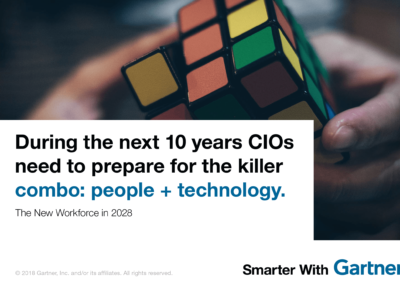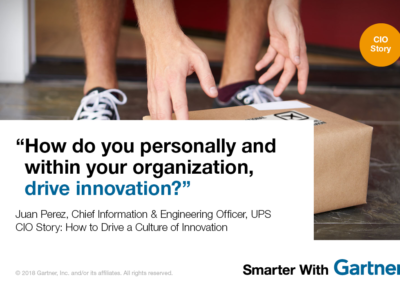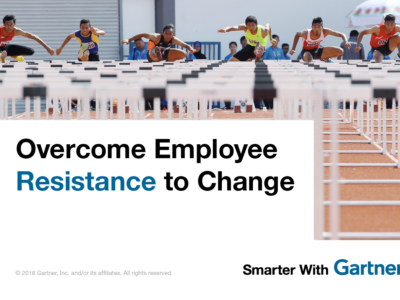What conventional companies can learn from organizations that consider digital technologies a core competency.
Fifty years ago, the most modern management science centered around mass manufacturing and the automotive industry. Today, the epicenter of management science is around technology and born-digital companies.
Born-digital enterprises are “a generation of organizations founded after 1995, whose operating models and capabilities are based on exploiting internet-era information and digital technologies as a core competency.”
In these companies, “the data will decide.”
“It’s actually the superior leadership thinking, patterns of thought and competencies they’re employing that are beginning to be the differentiators,” said Mark Raskino, VP and Gartner Fellow at Gartner Symposium/ITxpo in Barcelona, Spain. But conventional companies are often resistant to the idea that they might be able to replicate some of these ideas in their own enterprise.
bHowever, the excuses are starting to fall away as companies move toward digital. Traditional companies previously may have thought, those are startups so they can operate differently or those are small companies, they work in the ephemeral, or they are all U.S.-based companies. Mr. Raskino pointed out that Amazon is 20 years old, Google has 60,000 employees, Tesla Motors makes cars, and there are international born-digital companies, like China-based Alibaba Group.
“This is who is defining the landscape of modern management science and strategic success pretty much across the board. And you’ve got to copy them because, in the end, the techniques they’ve got are very powerful,” he said. “What they’re doing is not rocket science — it’s about leading different and thinking differently.“
Conventional companies can replicate certain aspects of born-digital companies, particularly in three key areas: Business, risk management and resourcing.
Business Focus
Mission matters
Born-digital companies articulate mission statements in specific, declarative statements that say “This is what we as a company are here to do.” This mission statement guides them. Uber’s mission statement is “To make transportation as reliable as running water, everywhere, for everyone.” Uber recognized the idea that in the 21st century it should be easy to get a taxi, and this is a fundamental organizing principle of the company. Everyone in that company knows where they’re headed, Mr. Raskino said.
Business model experiments
When it comes to business models, born-digital companies explore and test ideas. They might try a few models and end up with a blend. LinkedIn has three models: Talent Solutions, Premium Subscriptions and Marketing Solutions. The company treats the business model fluidly and “pivots” to find and refine models. If experiments fail, they try something different.
User-centric
Born-digital companies focus on the user and making the experience perfect for that person, with the philosophy that if they make the perfect product for the user, the money will follow. Relentless focus on the end user seems to succeed in the winner-take-all digital world.
Risk Management
Relative risk
Conventional businesses still make decisions based on gut feelings, but born-digital businesses use every tool and all data to guide the decisions. These companies will compare the action of risk to the risk of inaction if another company were to try the idea.
Read More: How to Get Your CEO to Embrace Digital Risk Management
Portfolio investing
In conventional companies most projects must succeed, and IT departments are locked into that mindset. Born-digital companies manage the portfolio differently. For example, they might expect two of every 10 projects to succeed and eight to fail.
Data-driven
Born-digital companies make decisions based on data. This means they are ruthless about A/B testing everything possible, and decide on metrics before they build. In these companies, “the data will decide.”
Resourcing
Machine first
When born-digital companies scale up, they try not to add humans, because people add bureaucracy. They will look to buy or create software to do the work that conventional companies would hire people to do to avoid the slowdown created by additional bodies. It’s not about being antagonistic toward people, it’s about maintaining speed and agility. The amount of employees no longer reflects the success of the company. For example, SnapChat only has 330 employees and Pinterest only 600.
Geek reverence
Digital companies give kudos and respect to IT and technical people. The technical team is included in power conversations and able to approach the CEO with ideas about emerging technology like blockchain.
Extreme talent
Born-digital companies are comfortable hiring fewer people if those hires are of a higher caliber. They understand that smaller teams deliver higher performances and cognitive diversity increases creativity. They are willing to invest a lot of money in a handful of people, versus a median amount in a larger number of people.
Read More: 4 Reasons to Consider a Techquisition
Tiny sourcing
Born-digital companies are comfortable working with the smallest of companies because they are trying to find unique products or services to differentiate themselves. If digital matters to the end-customer, it’s important to find something different and special to offer. Different and special often resides in small companies that can be acquired with small acquisitions versus large mergers with companies that don’t offer any innovation.
Get Smarter
Events on Demand
A video replay of this session will be available on Gartner Events on Demand.
Leadership eBook
Lead your team into the digital world. Download the complimentary CIO Leadership eBook.
Gartner Symposium/ITxpo 2016
Learn more about driving business performance at Gartner Symposium/ITxpo 2016. Follow news and updates from the events on Twitter using #GartnerSYM.










